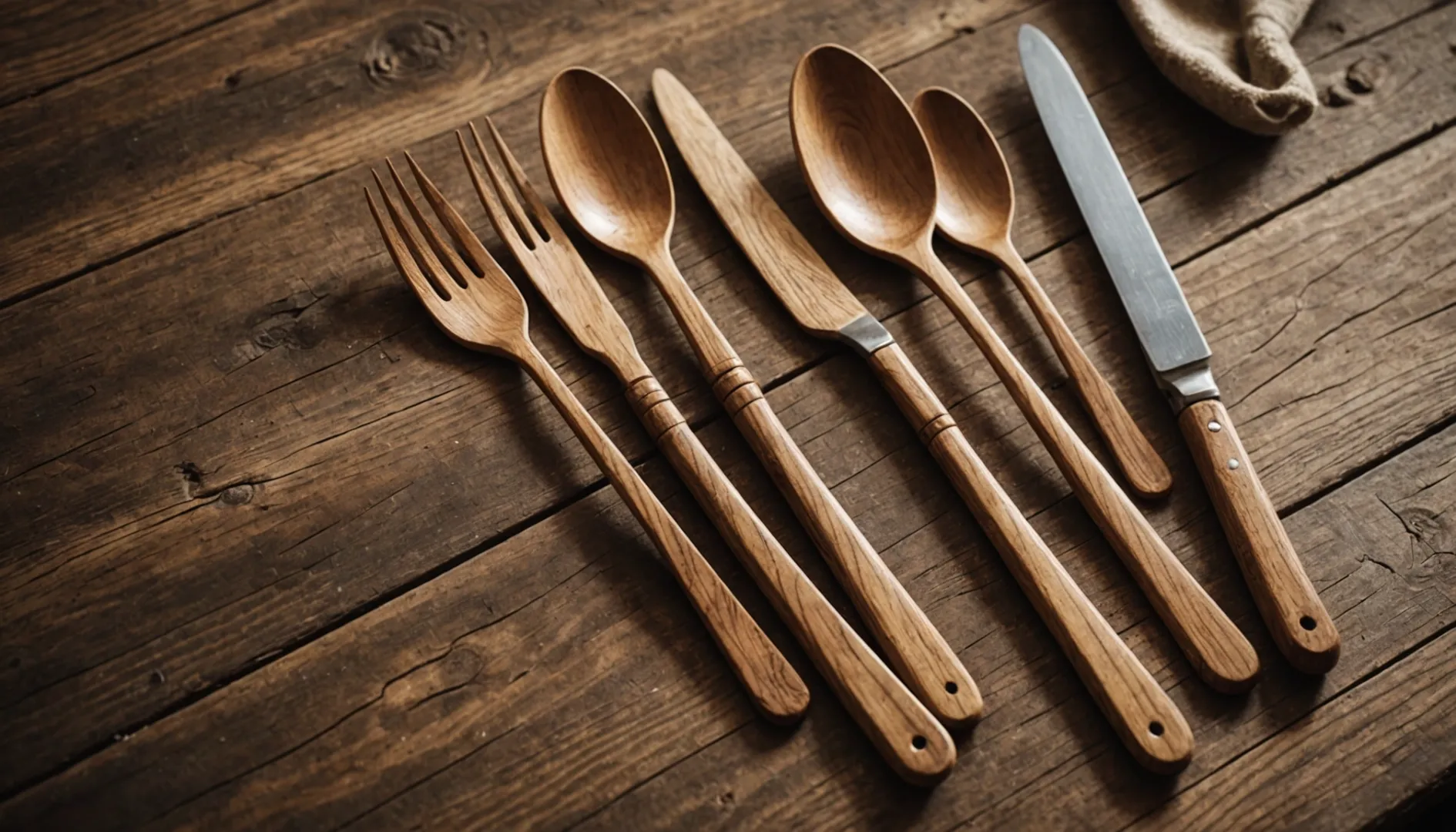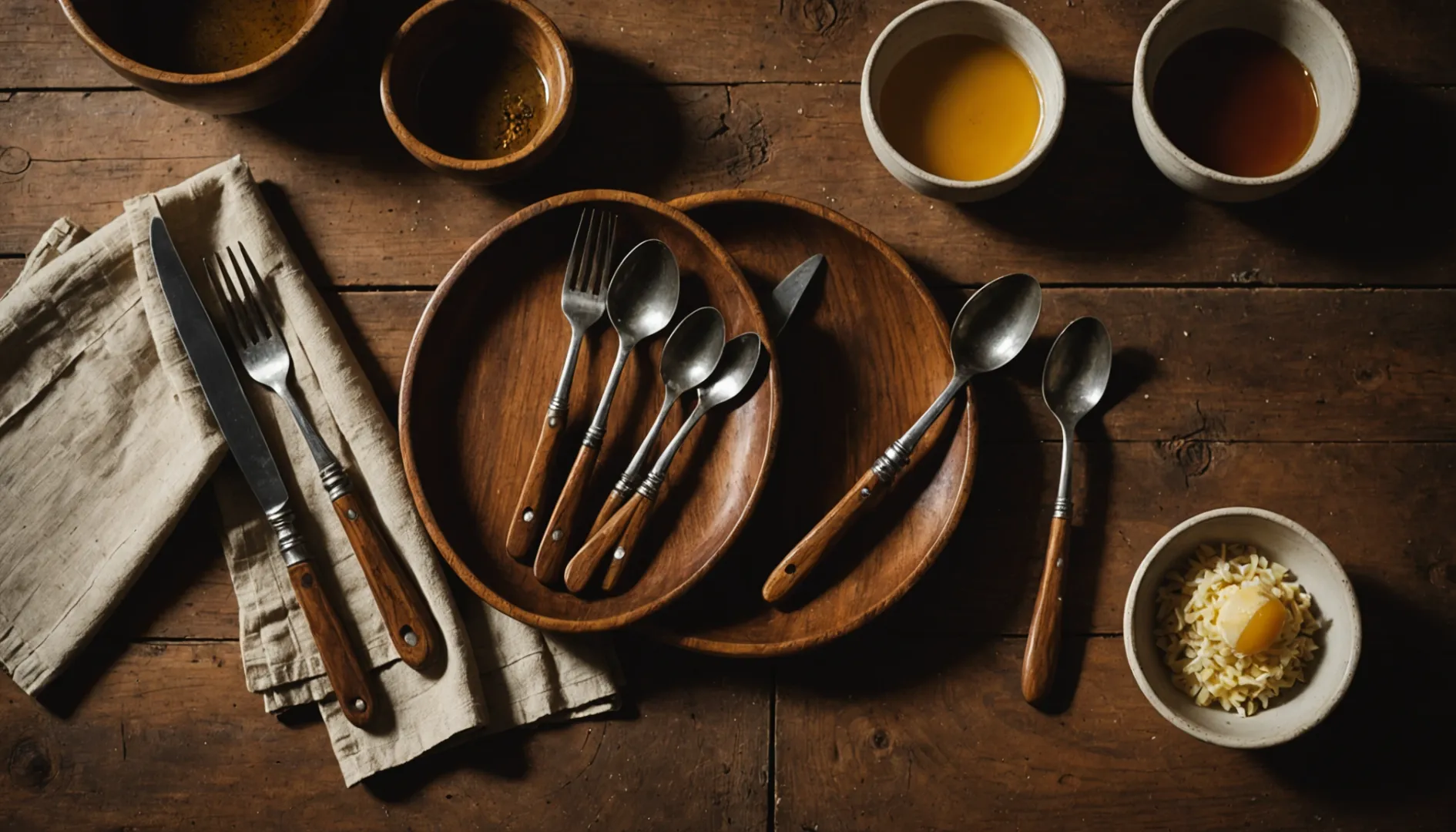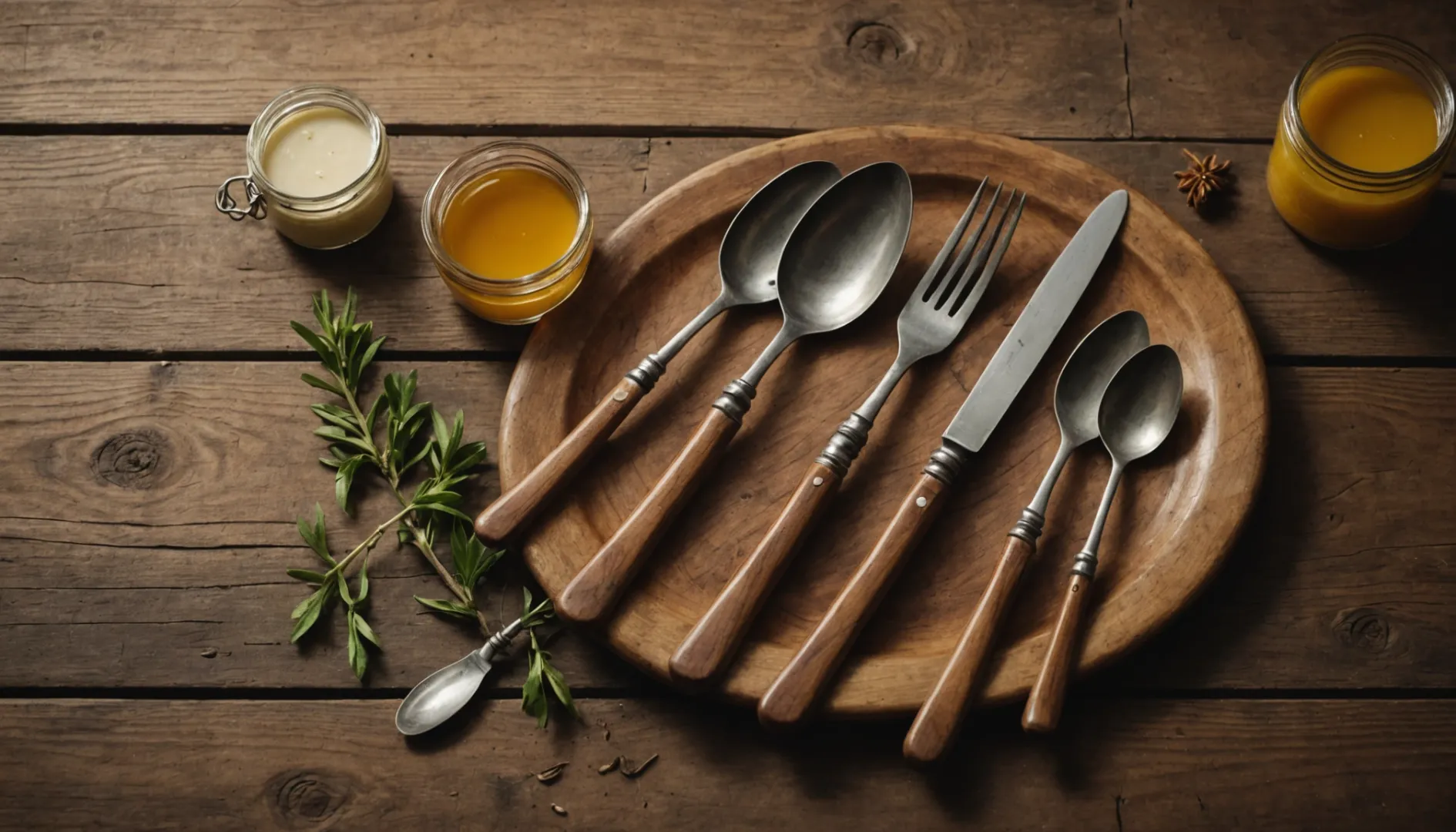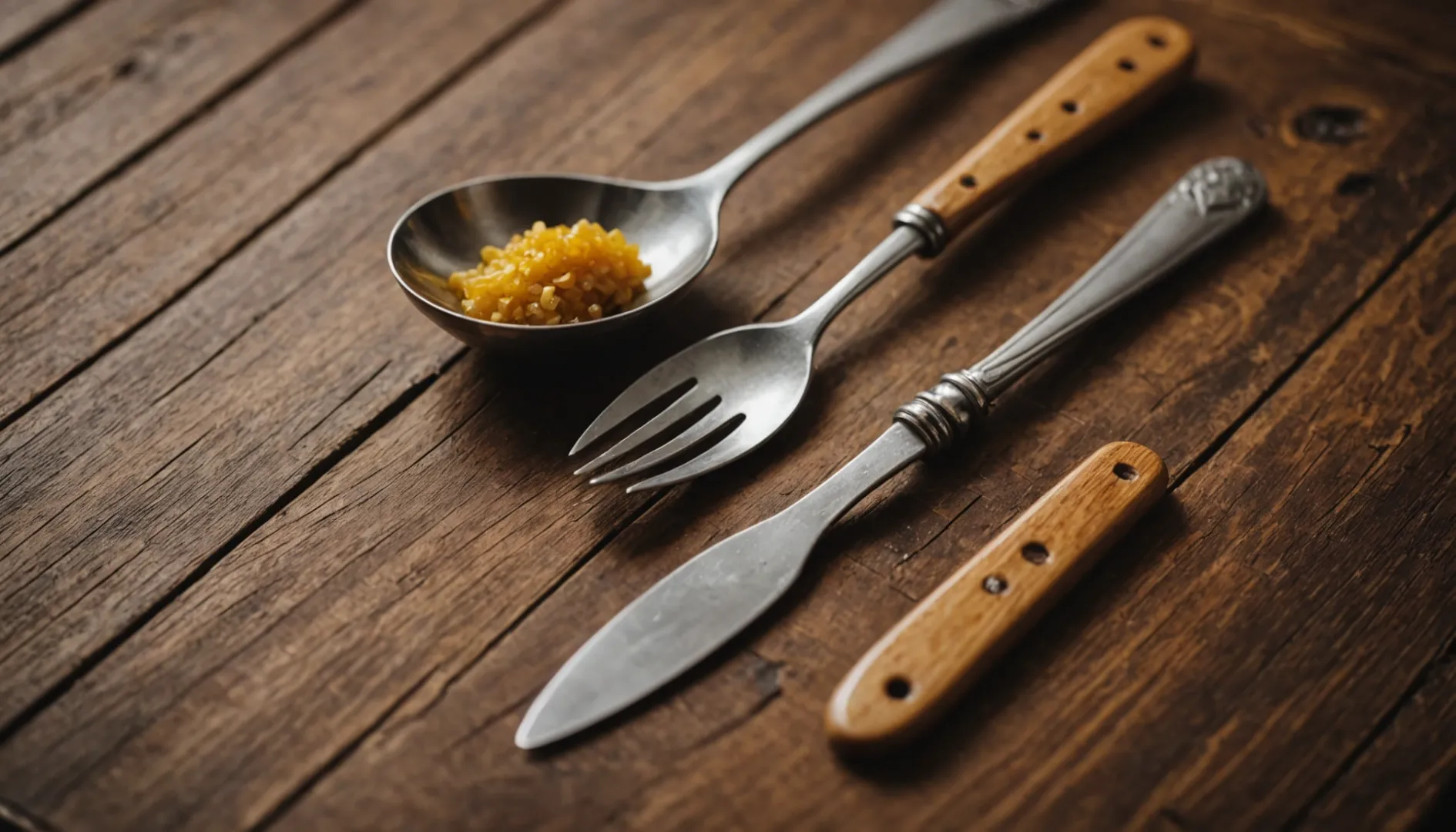
Ever paused at the utensil aisle, wondering which option truly champions Mother Earth?
Disposable wooden cutlery often edges out metal utensils in sustainability due to its biodegradable nature and renewable sourcing. While metal is durable and reusable, its production and recycling demand substantial energy. Responsibly sourced wooden cutlery generally boasts a smaller environmental footprint throughout its lifecycle.
But here's the catch—choosing between wooden and metal isn't just about materials. It's a dance between sourcing, durability, and how often you need them. Let’s unravel these elements to see how they influence the eco-friendliness of your dining tools. It’s not just about what's in your hand; it's about what's in your heart when it comes to sustainability.
Wooden cutlery is more hygienic than plastic.False
Wood is porous, absorbing moisture and bacteria, unlike non-porous plastic.
Bamboo cutlery is more sustainable than wooden cutlery.True
Bamboo regenerates faster and is easier to harvest than wood.
What are the environmental impacts of wooden cutlery?
Wooden cutlery might seem like the perfect green choice, but what's the real story behind its eco-credentials?
Wooden cutlery is considered more sustainable than plastic as it decomposes naturally and has a lower carbon footprint. However, its true environmental impact depends on responsible sourcing and manufacturing practices that avoid harmful chemicals.

Sustainable Sourcing and Manufacturing
Every time I choose wooden cutlery over plastic, I feel like I'm doing my bit for the planet. It's a small gesture, but it makes a big difference. Wooden cutlery, unlike its plastic counterparts, breaks down naturally, which means less landfill waste. However, it's not just about biodegradability. The source of the wood matters greatly. Imagine a world where every piece of wood is responsibly sourced from sustainably managed forests1. Not only does this practice conserve our natural resources, but it also helps maintain biodiversity.
Production and Chemical Use
In my kitchen, I love using wooden utensils coated with natural beeswax or plant oils—they're non-toxic and safe. This approach not only prolongs the life of my cutlery but also protects it from moisture and bacteria. Yet, it's crucial for manufacturers to stay away from harmful chemicals2 in production that could counteract these benefits.
Lifecycle and Decomposition
I have a compost bin in my backyard, and tossing in wooden cutlery feels like a win for Mother Earth. Unlike plastic, which hangs around forever, wooden utensils decompose and enrich the soil. But for them to be truly eco-friendly, knowing how to dispose of them properly is key. Composting facilities need to be equipped to manage biodegradable products effectively.
Comparisons with Other Materials
I've dabbled with bamboo cutlery too, and here's what I've found: while bamboo regenerates faster than wood, wooden cutlery offers a familiar feel that many of us prefer. The balance between renewability and functionality3 is delicate but achievable. Energy-wise, wooden cutlery sits comfortably between metal and plastic in terms of production efficiency, making it a strong contender in our quest for sustainability.
Wooden cutlery is more hygienic than plastic cutlery.False
Wooden cutlery is porous, absorbing moisture and bacteria if not maintained.
Wooden cutlery decomposes faster than plastic cutlery.True
Wooden utensils are biodegradable and decompose quicker than plastic.
How Does Metal Cutlery Compare in Terms of Durability and Reusability?
Ever wonder why metal cutlery seems to last forever while other types just can't keep up? Let's dive into the world of forks and spoons and see how metal stands out.
Metal cutlery shines in durability and reusability, outlasting plastic or wooden options. Thanks to its resilience against frequent use and cleaning, it’s the go-to for eco-conscious dining.

Material Strength and Longevity
You know those moments when you're digging through the drawer for a fork, only to find a bent prong from your last barbecue? That's where metal cutlery truly shines. My stainless steel set has been a kitchen staple for years. Stainless steel's ability to resist rust and corrosion makes it perfect for both home cooks like me and professional chefs. I remember my grandmother's silverware set, passed down through generations, still gleaming after decades of family dinners. Unlike wooden cutlery4, which can swell and crack, metal holds strong through every dish.
Reusability and Maintenance
One of the joys of using metal cutlery is its unfailing reliability. Unlike plastic forks that snap mid-meal, metal utensils are steadfast companions at my dining table. They can be tossed in the dishwasher without a second thought—something I appreciate on busy nights when handwashing bamboo cutlery5 is the last thing on my mind.
Environmental Impact
I often think about the long-term impact of my choices, and metal cutlery fits into my eco-friendly lifestyle. While it might take a bit more energy to produce, its durability ensures that fewer resources are used over time. I compare this to the mountain of single-use plastics I've avoided by sticking with metal. Wooden utensils, while biodegradable, don't quite match up in terms of longevity.
Cost-Effectiveness Over Time
It's tempting to grab cheap, disposable cutlery for parties or picnics, but I've found that investing in metal utensils pays off. My initial set cost a bit more upfront, but the savings over time are undeniable. Whether it's a family dinner or an impromptu outdoor gathering, my trusty metal set is always ready to go. This long-term investment not only supports my budget but also aligns with my commitment to sustainable living, reducing the need for constant replacements of disposable cutlery6.
In conclusion, if you're considering making a switch to something more durable and eco-friendly, metal cutlery offers an unbeatable combination of strength, reusability, and sustainability.
Wooden cutlery absorbs moisture easily.True
Wood is porous, making it prone to moisture absorption if untreated.
Wooden cutlery is more durable than metal cutlery.False
Metal cutlery is generally more durable and long-lasting than wood.
How Can I Keep My Wooden Cutlery in Top Shape?
Ever find yourself reminiscing about that perfectly crafted wooden spoon your grandma used? Wooden cutlery has a charm of its own, but it takes some special care to keep it looking and feeling just right.
To maintain wooden cutlery, hand wash with mild soap, dry immediately, and apply food-safe oil monthly. Avoid soaking or high heat to prevent damage.

Proper Cleaning Techniques
Wooden cutlery should always be washed by hand with mild soap and warm water. Avoid using a dishwasher as the prolonged exposure to water and heat can cause warping and cracking. After washing, promptly dry the utensils with a clean cloth to prevent moisture absorption, which can lead to bacterial growth.
Regular Oil Conditioning
To keep wooden cutlery in top condition, it's essential to apply a food-safe oil, such as mineral oil or beeswax, once a month. This reconditions the wood, restoring its natural oils and creating a protective barrier against moisture. Simply apply a thin layer of oil using a soft cloth and let it absorb overnight. This practice helps prevent cracking and enhances the utensil's aesthetic appeal.
Storage Considerations
Store wooden cutlery in a dry, cool place away from direct sunlight or heat sources, which can dry out the wood and weaken its structure. Consider using a utensil holder that allows air circulation to further reduce moisture retention. Keeping them away from high temperatures ensures they remain robust and functional.
Avoiding Common Mistakes
It's crucial to avoid soaking wooden cutlery in water for extended periods, as this can lead to swelling or cracking—something I discovered the hard way with my favorite spoon. Likewise, refrain from using them with highly acidic or hot foods unless they have a protective coating. Regular reapplication of oil can mitigate the effects of these elements on untreated wood.
Eco-Friendly Considerations
When selecting wooden cutlery, look for products that have eco-certifications, such as FSC certification, indicating sustainable sourcing practices. This ensures that the wood is harvested responsibly, aligning with environmental standards and consumer expectations. For more on eco-friendly choices, explore eco-certifications7 to learn how they enhance product credibility.
Enhancing Hygiene
Natural coatings such as beeswax not only enhance the appearance but offer some protection against bacteria. Make sure any coating used is food-safe and doesn't degrade easily under heat. Manufacturers often provide guidelines for maintaining these finishes effectively.
By following these best practices, you can extend the life of your wooden cutlery while maintaining its natural beauty and functionality. Additionally, staying informed about sustainable choices ensures that your cutlery aligns with your environmental values.
Wooden cutlery requires regular oiling for longevity.True
Regular oiling prevents cracking and maintains the utensil's integrity.
Wooden cutlery is dishwasher safe.False
Dishwashers can cause wood to swell or crack, reducing lifespan.
Which Material Aligns Better with Eco-Friendly Practices?
Ever stood in the aisle, holding a wooden fork in one hand and a bamboo spoon in the other, wondering which truly embodies eco-friendliness?
Wooden cutlery is generally seen as more eco-friendly than plastic due to its biodegradability and renewable sourcing. However, bamboo might be an even better option because of its rapid growth and lower environmental footprint. To truly determine eco-friendliness, consider the entire lifecycle of materials from production to disposal.

The Appeal of Wooden Cutlery
I remember the first time I swapped out my usual plastic forks for wooden ones at a picnic. There was something charming about them — maybe it was the warm, rustic feel that made my little salad taste just a bit fresher. But beyond aesthetics, wooden cutlery is biodegradable, breaking down naturally unlike its plastic counterparts that linger in landfills for ages. Plus, if responsibly sourced, wood becomes a renewable resource, adding a green tick to its list of qualities.
But let’s be real: wooden utensils have their quirks. They're porous, so they can absorb moisture and even harbor bacteria if not cared for properly. I’ve learned the hard way that regular maintenance is key. A quick rub with some oil now and then does wonders for keeping them in tip-top shape.
The Bamboo Alternative
Enter bamboo — the fast-growing wonder plant! It’s like nature’s answer to sustainability prayers. Bamboo requires minimal water and doesn’t need replanting once harvested. It’s no wonder I felt like I’d found a gold mine when I first discovered bamboo cutlery. The strength and lightweight nature make it a fantastic choice, not to mention it can withstand more heat than some woods.
Still, while bamboo cutlery checks many boxes for eco-conscious folks like me, it might not quite capture the homey feel some woods offer. Yet, its ability to compost rapidly is a significant win for the planet.
Assessing Environmental Impact
When I set out to choose between these materials, I realized it wasn’t just about aesthetics or initial environmental benefits. Conducting a Life Cycle Analysis8 opened my eyes to the broader picture — from the energy used in production to disposal. Bamboo often comes out on top due to its swift renewability and minimal pesticide requirements.
Then there’s the transparency factor. Knowing where my materials come from and ensuring they’re sustainably sourced matters immensely to me. Tools like blockchain for traceability9 could be game-changers, providing the assurance that my eco-friendly choices are as ethical as they are green.
The Balance Between Sustainability and Functionality
The choice between wood and bamboo ultimately boils down to balancing sustainability with everyday practicality. I’ve come to appreciate wood for its familiarity and aesthetic charm, yet I can’t ignore bamboo’s rapid renewability and efficiency.
As regulations around single-use plastics tighten globally, we’re all nudged towards materials that not only meet environmental standards but also satisfy our need for quality and performance. Exploring how different materials fare in various applications has been eye-opening, helping me make informed decisions.
In the end, whether it’s wooden or bamboo cutlery, the goal remains clear: to choose materials that minimize environmental impact while offering usability and satisfaction.
Wooden cutlery is more prone to bacterial growth than plastic.True
Wood's porous nature can absorb moisture, fostering bacteria if not maintained.
Wooden cutlery cannot be composted after use.False
Wooden cutlery is biodegradable and can often be composted.
Conclusion
Disposable wooden cutlery is often more sustainable than metal due to its biodegradability and renewable sourcing, but proper maintenance is crucial for hygiene and longevity.
-
Understand how responsible forestry supports sustainability and conserves resources. ↩
-
Learn about chemicals to avoid in sustainable wooden cutlery production. ↩
-
Explore how wood and bamboo compare in sustainability. ↩
-
Explore how wooden cutlery compares to metal in terms of lifespan. ↩
-
Discover maintenance differences between bamboo and metal cutlery. ↩
-
Understand why reusable options are economically beneficial. ↩
-
Learn how eco-certifications enhance product credibility and ensure sustainability. ↩
-
Discover how lifecycle analysis evaluates environmental impact. ↩
-
Understand blockchain's role in verifying sustainable sourcing. ↩

